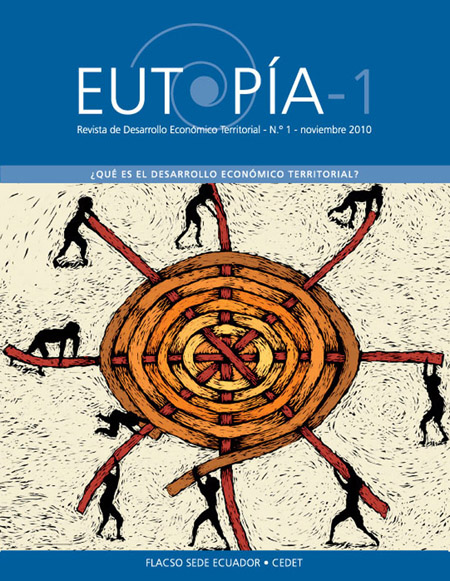Clusters y desarrollo local: El caso del distrito textil en Atuntaqui
Resumen
El de Atuntaqui es considerado un caso exitoso de desarrollo económico. El autor revisa la experiencia del distrito textil de esta ciudad de la provincia de Imbabura y concluye que el hecho representa, en realidad, un caso de sobre-especialización, debido a la ausencia de diversificación económica. Además, el autor reconoce que hay un sesgo urbano por parte de la municipalidad, a partir de lo que señala la necesidad de una aproximación territorial más amplia dirigida a la planificación de desarrollo local y regional que se enfoque en aspectos como escasez de agua, pobreza rural y explotación laboral femenina; lo anterior opuesto a la perspectiva que ignora los vínculos entre lo rural y lo urbano. En el artículo, el recuento exitoso de este caso es cuestionado al señalarse que los donantes exageran respecto del impacto económico del cluster textil. Atuntaqui es visto como un modelo entre las ciudades vecinas como resultado de reciente dinamismo económico. Quienes postulan políticas en esa localidad necesitan profundizar sus esfuerzos y tomar en cuenta las externalidades negativas que permiten concluir que los clusters no son la panacea para un rápido desarrollo industrial.Descargas
Derechos de autor 2015 César Paredes

Esta obra está bajo licencia internacional Creative Commons Reconocimiento-NoComercial 4.0.

Eutopía, Revista de Desarrollo Económico Territorial opera bajo licencia Creative Commons Reconocimiento-Sin Obra Derivada 3.0 Unported (CC BY-ND 3.0).
Los autores/as que publiquen en Eutopía aceptan estos términos:
Usted es libre de compartir — copiar y redistribuir el material en cualquier medio o formato para cualquier finalidad, incluso comercial. Por tanto, autores conservan los derechos de autor y ceden a la revista el derecho de la primera publicación (CC BY-ND 3.0), que permite a terceros la redistribución, comercial o no comercial, de lo publicado siempre y cuando el artículo circule sin cambios.
Existen las siguientes condiciones para los autores:
Reconocimiento — Debe reconocer la autoría, proporcionar un enlace a la licencia e indicar si se han realizado cambios. Puede hacerlo de cualquier manera razonable, pero no de una manera que sugiera que tiene el apoyo del licenciador o lo recibe por el uso que hace.
Sin Obra Derivada — Si remezcla, transforma o crea a partir del material, no puede difundir el material modificado.
Para más detalles, visitar la página de Creative Commons (CC).


























